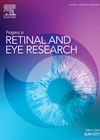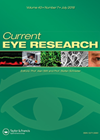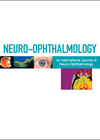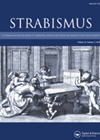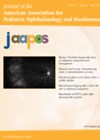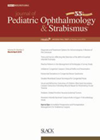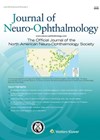
Journal Reviews
Comprehensive review of inherited retinal diseases
The authors offer an up-to-date review of inherited retinal diseases (IRDs). In each section the authors discuss the molecular basis of disease, genotype and clinical manifestation. They also discuss the investigation findings and current evidence in the treatment of the...
Contrast sensitivity in myopic eyes
A classification system has been proposed for myopic maculopathy: grade 0 (no myopic retinal lesions), grade 1 (tessellated fundus), grade 2 (diffuse chorioretinal atrophy (CRA)), grade 3 (patchy CRA), and grade 4 (macular atrophy). Tessellated fundus is defined as the...
Blood pressure association with primary open angle glaucoma severity
This prospective observational study involved 47 patients diagnosed with primary open angle glaucoma (POAG) examined to investigate their postural blood pressure response and its potential correlation with the severity of glaucomatous optic neuropathy (GON). Participants underwent intraocular pressure and systemic...
Is thrombolytic treatment warranted for central retinal artery occlusion?
Central retinal artery occlusion (CRAO) is a subtype of acute ischaemic stroke which results in severe visual loss. Acute CRAO is equivalent to a brain acute ischaemic stroke (AIS), as the obstruction of the central retinal artery (CRA) causes end-organ...
Is intracranial pressure affected by the valsalva manoeuvres and exercise?
Idiopathic intracranial hypertension (IIH) is characterised by elevated intracranial pressure (ICP), which leads to optic nerve head swelling and a risk of visual loss. The impact of straining and exercise on ICP regulation is poorly understood yet clinically relevant to...
Review of efficacy and safety of tetracaine drops in strabismus surgery
Tetracaine is a topical anaesthetic drug used to anesthetise the eye and surrounding areas during strabismus surgery. It is generally safe and well tolerated but can cause mild adverse reactions at the site of use and, in rare cases, serious...
Testing near or distance visual acuity for change during amblyopia therapy
In this study, the authors aimed to determine if any differences occurred between near and distance visual acuity (VA) in a cohort of childhood untreated amblyopia. They recruited 54 patients with mean age 4.9 years, SD 0.44. Mean VA in...
Comparison of visual field indices between normal adults and children
The authors present a prospective observational study which aimed to compare visual field indices with retinal nerve fibre layer (RNFL) thickness using optical coherence tomography (OCT) in normal adults and children. Children aged 6–18 years were recruited from a single...
Use of telemedicine within adult strabismus management
The aim of this survey was to assess the practice preferences in the management of adult strabismus among the American Association for Pediatric Ophthalmology and Strabismus (AAPOS) committee members. A 27-question multiple-choice questionnaire was sent to 19 ophthalmologists on AAPOS...
Hybrid free vision screening for at-risk, low-income families
Give Kids Sight Day (GKSD) is an outreach programme at Wills Eye Hospital to provide free vision screening, ophthalmic examinations and glasses. It started in 2009 and has seen >11,000 children. Its primary aim is to reach high-risk families including...
Transsynaptic retrograde degeneration linked to homonymous visual field loss after stroke
centre, of individuals identified with homonymous visual field loss post ischaemic stroke. Exclusion criteria were bilateral ischaemia, anterior / pregeniculate visual pathway affected and other pathology with the potential to effect visual fields. The following were extracted from the medical...
Intermittent manual compression for CCF
Carotid cavernous fistulae (CCF) can be classified as high and low-flow or as having direct and indirect communication. Most commonly, management of high-flow CCF is with endovascular embolisation. The authors look at an alternative treatment for CCF in indirect low-flow...

